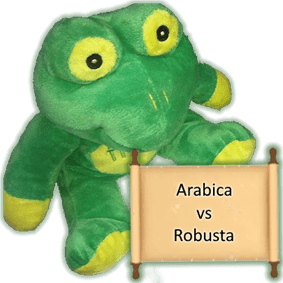History is always something that has fascinated me. Firstly we can learn lessons from it, if we take the time to look at it, and it explains a lot of weird things like why are coffee futures are controlled by countries that do not even grow coffee.

Coffee Futures graph
Futures?
What the hell are they? Futures are instruments that attempt to predict the supply quantities of a product. As we know supply and demand determine the price of an item in a truly open market. If there is an oversupply for the demand then the price goes down, and under supply the price goes up. So futures look at the prevailing conditions to try and predict the output or eventual supply. For coffee this works in roughly 3 month prediction cycles.
Coffee Market base
The coffee market in the 1800’s was controlled by the Dutch and German’s, they sorted and distributed coffee to the rest of the world. Hanover is still the largest exporter of coffee. In fact even though Brazil was the largest producer of coffee (all varieties), it first went to either Amsterdam, or Hanover to be sized and graded and then got distributed to the rest of the world.
World War I
With Europe entering into a little skirmish in 1914, that became a world war, America was starved of coffee. Even though at that point they were a small consumer (only around 30 million bags), they decided to go straight the the Brazilian source, and specifically the well established port of Santos.
With this came the development of the NY futures market. The NY Stock exchange had no reference point so they setup their own futures market, initially only for the USA, but with the destruction of the Dutch and Germans economies as a result of WWI. Add to that the fact that by the mid 1930’s America became one of the largest consumers of coffee (it has been the largest consumer for the last 40 years), the NY coffee futures became dominant to the point that none of the other exchanges kept up.
London and Robusta
The London Stock Exchange is often considered the oldest, but actually the Amsterdam one, was probably first.
When Europeans rushed to colonise Africa, they bought coffee back to the continent (both Arabica and Robusta where found there originally, Arabica from Ethiopia, and Robusta from the Congo) that had provided it. Between the French and the English more Robusta plantations where set up through out Africa. Since the English controlled the trade routes they started the Robusta futures market to challenge the Dutch and German Arabica based market.
Robusta only really become a dominant player just before the first W.W. London continued to control the price of Arabica’s much cheaper cousin. By the way it represents 40% of the coffee consumed now.
Since the Americans have never really taken significant amount of Robusta (European demand is still higher, although extract and instant providers are responsible for the bulk of the purchases on both sides of the Atlantic), the NY exchange never started trading in Robusta futures, and that will probably stay the case.
Coffee trading Myth
As a side note, a fact that is often misquoted is that coffee is the second most traded item. This is not true. Coffee Futures are the second most actively traded instrument behind oil, it is actually the 50th most traded item world wide, or there about.


